Last updated on
Discover innovative ways to conceal electrical outlets in your kitchen, maintaining a sleek and clutter-free cooking space.
Your kitchen is the heart of your home, where you cook meals, share stories, and create memories with loved ones. However, nothing ruins the aesthetic of a beautiful kitchen quite like unsightly outlets.
These necessary features can be an eyesore that detracts from your overall design scheme. Fortunately, there are several ways to hide outlets in your kitchen without sacrificing functionality or safety.
In this article, we’ll explore some creative solutions for camouflaging outlets and maintaining a seamless look in your cooking space. So let’s dive in and discover how to keep those pesky outlets out of sight!
What's Inside
Choosing the Right Outlet Color
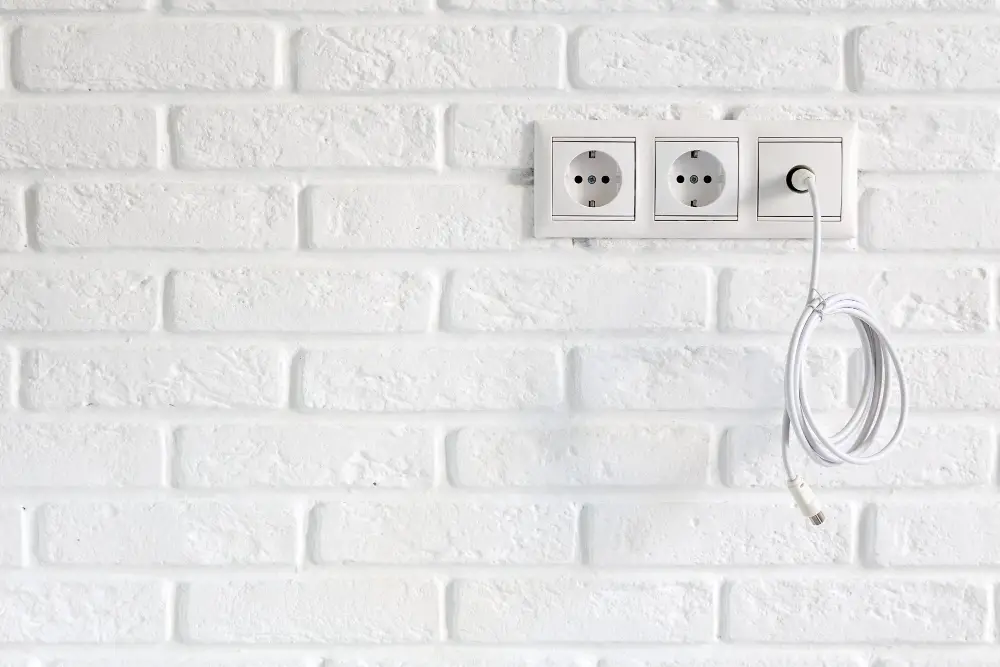
When it comes to hiding outlets in your kitchen, choosing the right color can make all the difference. If you have a light-colored backsplash or walls, white outlets will blend in seamlessly and go unnoticed.
However, if you have darker tones or bold patterns on your walls or backsplash, black outlets may be a better option for camouflaging them.
Another option is to match the outlet color with that of your cabinets so they blend into their surroundings. This works particularly well if you have under-cabinet lighting that illuminates countertops and appliances but also highlights any visible electrical sockets.
If none of these options work for you, consider using metallic finishes such as brushed nickel or bronze which can add an elegant touch while still blending in with surrounding elements.
Paintable Screwless Wall Plates
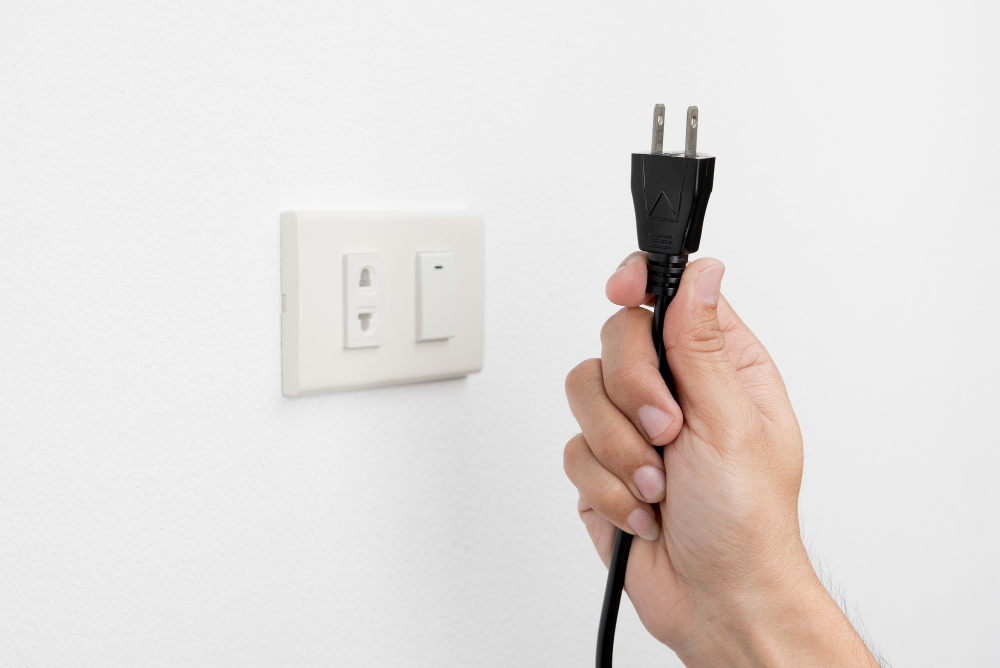
These plates are designed to blend seamlessly into your walls, making them virtually invisible. They come in a variety of sizes and shapes, so you can choose the one that best fits your outlet configuration.
To use these wall plates, simply remove the existing cover plate from your outlet and replace it with a paintable screwless version. Once installed, you can paint over the plate with matching wall color or even create an accent piece by painting it a contrasting color.
Not only do these covers provide an easy solution for hiding outlets but they also add aesthetic value to any room they are used in.
Colored Receptacles

These outlets come in a variety of colors, allowing you to match them with your backsplash or wall color for a seamless look. Colored receptacles are an excellent option if you want to add some personality and style to your kitchen while keeping the functionality of electrical outlets intact.
When choosing colored receptacles, make sure they meet safety standards and have tamper-resistant features that protect children from electric shock. You can also opt for weather-resistant models if you plan on installing them outdoors or near water sources.
It’s essential to ensure that the outlet covers match the color of the outlet itself for a cohesive appearance.
Specialty Finish Faceplates
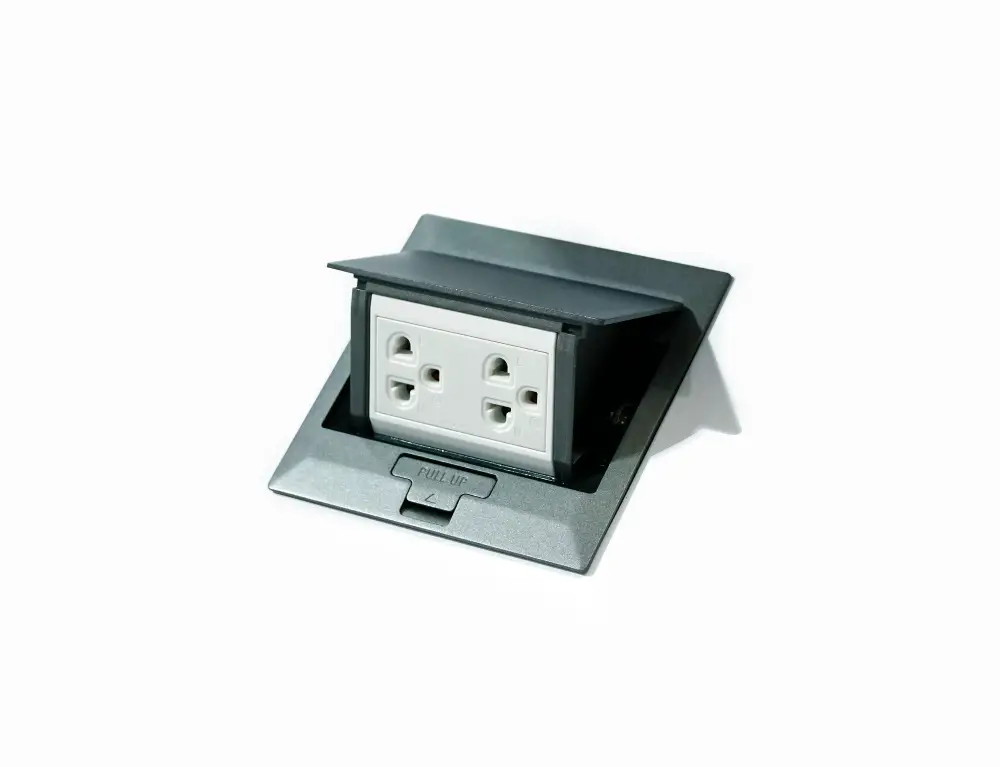
These plates come in a variety of finishes, including brushed nickel, bronze, and copper. They can add an elegant touch to your kitchen while still concealing outlets.
One popular choice is the stainless steel finish plate that blends seamlessly with stainless steel appliances and fixtures. Another option is the oil-rubbed bronze plate that adds warmth to any kitchen design.
These faceplates are easy to install and can be found at most home improvement stores or online retailers. They typically cost slightly more than standard plastic covers but offer a much higher-end look.
Hiding outlets in your kitchen doesn’t have to be difficult or expensive.
Installing Outlet Covers

These covers come in a variety of styles and finishes, allowing you to choose one that complements your kitchen’s design scheme. For example, if you have a modern or minimalist kitchen, opt for sleek stainless steel or black outlet covers that blend seamlessly into the wall.
To install an outlet cover, first turn off power to the circuit at your home’s electrical panel. Then remove the existing cover plate by unscrewing it from its mounting bracket with a screwdriver.
Next, attach the new cover plate using screws provided with it.
Outlet covers are an affordable and simple solution for hiding outlets while keeping them accessible when needed. They also provide added safety by preventing accidental contact with live wires behind them.
Removable Tile Cover Plates

These plates blend seamlessly with your backsplash, making them virtually invisible. They come in a variety of colors and finishes to match any tile design, ensuring that they won’t detract from the overall look of your kitchen.
The best part about removable tile cover plates is that they’re easy to install and remove. You can switch out the covers whenever you want without damaging the tiles or wall behind them.
This makes it simple to update your outlet covers as often as you like without having to redo any major renovations.
To install these cover plates, simply remove the existing outlet cover and attach a mounting bracket over it using screws or adhesive tape. Then snap on the new tile plate onto this bracket – no need for special tools or skills! When you need access to an outlet, just pop off the plate like a puzzle piece.
Custom Outlet Covers

These covers can be designed to match the color and texture of your walls or backsplash, making them virtually invisible. You can even have them printed with images or patterns that complement your kitchen’s decor.
One popular option is to use a photo of the surrounding area as the cover image. For example, if you have a beautiful view from your kitchen window, take a picture of it and use that image on an outlet cover near the window.
Another idea is to create custom covers using decorative tiles or mosaic pieces that match your backsplash design. This will give an added touch of elegance while still keeping those pesky outlets out of sight.
Custom outlet covers are also great for adding personality and flair to any room in your home where electrical outlets are present but detract from its overall aesthetic appeal.
Camouflage Outlets
These cleverly designed receptacles blend seamlessly into the surrounding backsplash or wall, making them virtually invisible. Camouflage outlets come in a variety of styles and finishes to match any decor scheme.
One popular option is the pop-out outlet, which sits flush with your countertop when not in use and pops up when needed. This type of outlet can be installed directly into your countertop or island for easy access without sacrificing style.
Another option is an under-cabinet power strip that blends into the underside of your cabinets while providing convenient access to electrical power where you need it most – right at counter level! These strips are available with multiple sockets so that you can plug-in all appliances simultaneously without worrying about running out of space.
Using Under-Cabinet Outlets
These strips are mounted underneath cabinets, providing a discreet and convenient way to access electrical outlets without cluttering up your walls or countertops. Under-cabinet power strips come in various lengths and styles, so you can choose one that fits seamlessly with your kitchen’s design scheme.
Not only do these hidden outlets keep cords out of sight, but they also provide easy access for appliances like blenders or mixers that need to be plugged in while being used on the countertop. Under-cabinet lighting can be connected through these same outlet systems.
When it comes time for installation, it’s important to hire a licensed electrician who has experience working with this type of wiring system. They will ensure proper placement and safety measures are taken during installation.
Under Cabinet Power Strip
This solution not only keeps your outlets out of sight but also provides convenient access to electrical power for appliances and devices on the countertop. Under cabinet power strips come in various lengths, styles, and finishes that can match or complement your cabinetry.
When choosing an under cabinet power strip, consider the number of outlets you need and their spacing. Some models have USB ports for charging smartphones or tablets without using a separate adapter.
Look for a UL-listed product with built-in surge protection to safeguard against voltage spikes.
Installation is relatively easy if you have basic wiring skills or hire a licensed electrician. You’ll need to drill holes through the bottom of each wall cabinet where you want the outlet strip mounted and run wires from an existing circuit breaker box or junction box behind one of the cabinets.
Undercounter Power Strips or Under the Overhang
These solutions involve installing a power strip underneath your cabinets, so it’s out of sight but still easily accessible. This is particularly useful if you have an island or peninsula with an overhang that provides seating space.
By placing the outlet strip under the counter, you can keep cords and plugs hidden from view while still providing ample access to electrical outlets for appliances and devices. You can also choose to install a pop-up outlet on top of your countertop that remains flush when not in use.
When selecting an undercounter power strip, look for one with multiple outlets and USB ports to accommodate all of your electronic needs. Ensure that it has surge protection built-in to protect against electrical surges caused by lightning strikes or other events.
Recessed Outlet Placement
This technique involves installing electrical boxes into the wall and then covering them with a flush-mounted cover plate. The result is an outlet that sits nearly flush with the wall surface, making it virtually invisible.
One of the benefits of recessed outlets is that they can be installed anywhere on your walls without disrupting your design scheme. You can place them behind appliances or even underneath cabinets to keep cords out of sight.
However, it’s important to note that recessed outlets require professional installation by a licensed electrician due to their complexity and safety concerns. They may not be suitable for all types of walls or materials.
Counter-Level Outlets
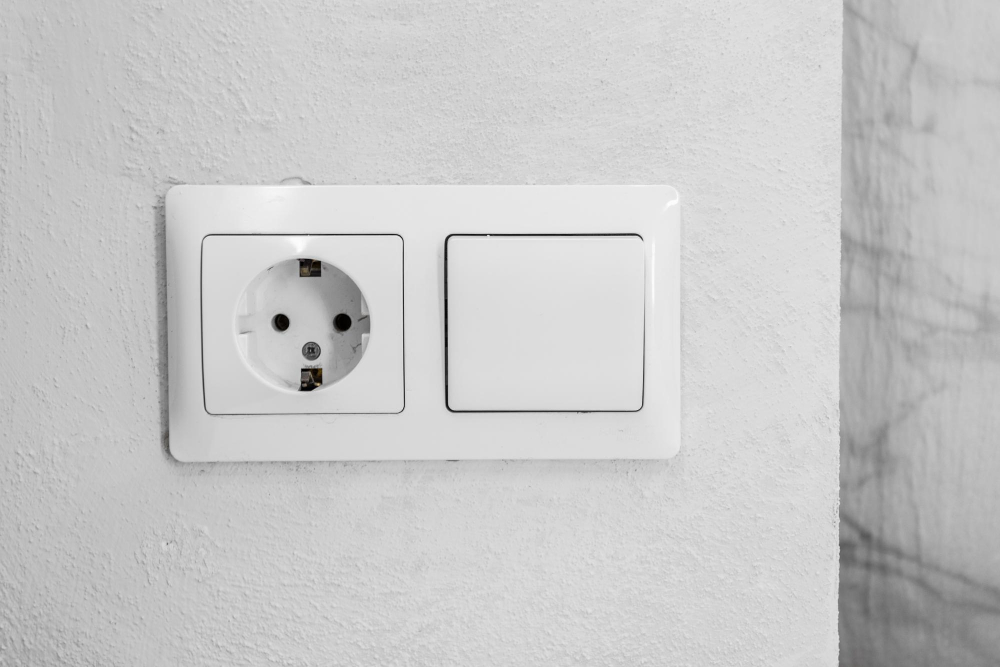
This placement ensures that they are easily accessible while cooking, but also blends seamlessly into your backsplash or countertop. Counter-level outlets can be installed horizontally or vertically and come in a variety of colors and finishes to match your decor.
When planning for counter-level outlets, it’s important to consider their placement carefully. You want them to be conveniently located near appliances without being too close that cords become a tripping hazard or an eyesore on the countertop surface.
You may want to consider adding USB ports alongside traditional electrical sockets for added convenience when charging devices like phones and tablets.
Outlet Relocation Strategies
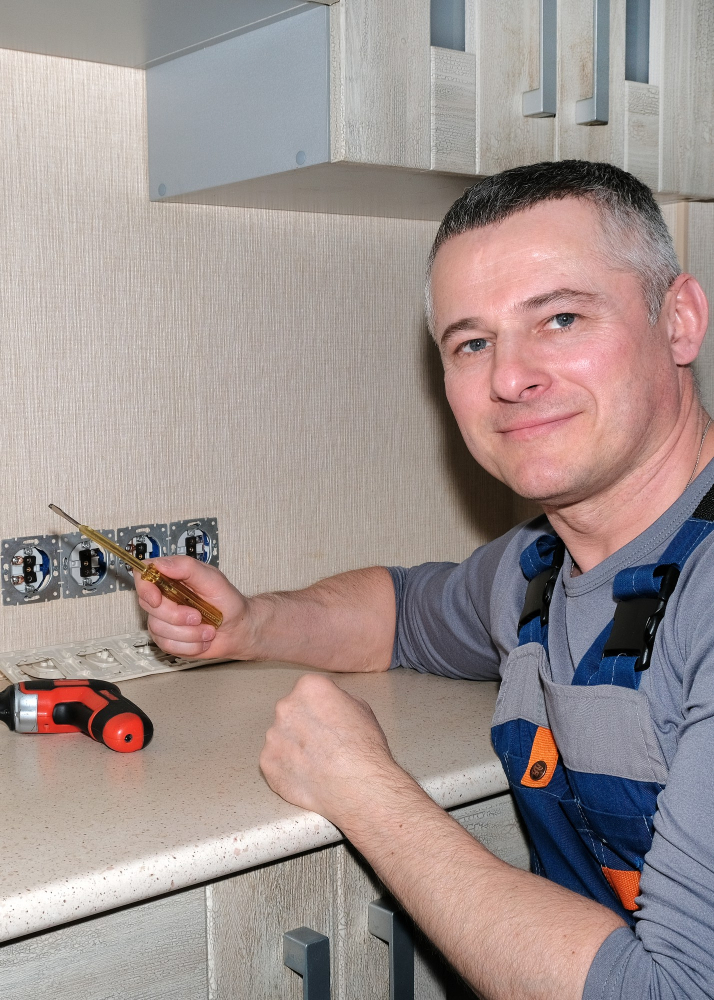
This can be a bit of an undertaking, but it’s worth the effort if you want to achieve a seamless look in your cooking space. One option is to move outlets higher up on the wall or under cabinets where they are less noticeable.
Another strategy is to relocate them behind appliances or inside cabinets so that they are completely hidden from view.
Before making any changes, consult with an electrician and make sure that all electrical work is done safely and up-to-code. Keep in mind that moving outlets may require cutting into walls or cabinetry which could add additional costs for repairs and touch-ups.
Relocating outlets can also provide added convenience by placing them closer to areas where you need power most such as near countertops or islands where small appliances like blenders and mixers will be used frequently.
Power in Kitchen Islands
They also offer an opportunity to incorporate electrical outlets into your kitchen design. Adding power to your island can make it more functional for cooking, entertaining, and charging devices.
When planning the placement of outlets in your kitchen island, consider how you will use the space. If you plan on using small appliances like blenders or mixers on the island’s surface, place outlets at counter level for easy access.
Another option is installing pop-up power strips that remain hidden when not in use but provide convenient access when needed. These types of solutions keep cords off countertops while still allowing easy access to electricity.
If you’re building a new home or remodeling an existing one with a kitchen renovation project underway – adding electrical wiring during construction is easier than retrofitting later on down the line. Incorporating power into your kitchen island can enhance its functionality without sacrificing style or aesthetics.
Add Space to the Island for Cabinet Outlets
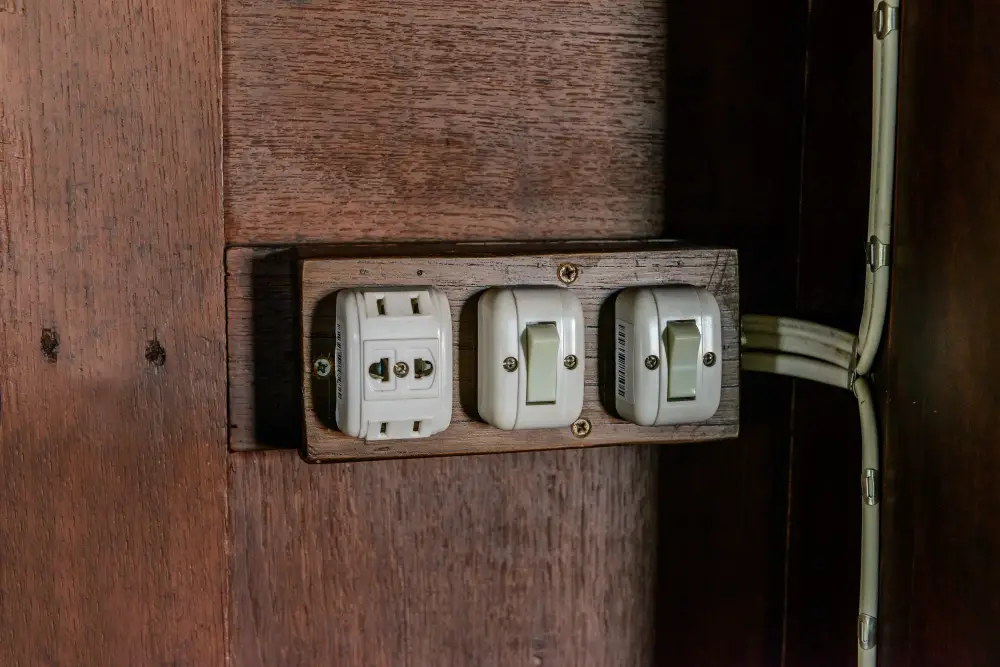
One way to do this is by adding space for cabinet outlets. You can install electrical boxes inside your cabinets and connect them with wiring that runs through the back of your cabinetry.
This solution not only hides unsightly cords but also provides easy access to power sources while cooking or entertaining guests in your kitchen. Plus, it frees up counter space that would otherwise be taken up by appliances like blenders or mixers.
When planning for cabinet outlet installation, consider how many devices you’ll need to plug in and where they will be located on the island. This will help determine how many outlets are necessary and their placement within each cabinet.
Integrating Outlets Into Backsplash

This solution not only conceals unsightly outlets but also adds a stylish touch to your cooking space. You can choose from various materials, such as glass, ceramic tile, or natural stone for creating a seamless look that blends with the rest of your backsplash.
To integrate an outlet into a backsplash, you’ll need to work with an electrician and contractor who specialize in this type of installation. They will cut out holes in the tiles or slabs where you want to place electrical receptacles and install them securely behind the surface material.
Once installed correctly, these hidden outlets will be virtually invisible while still providing easy access for plugging in appliances and charging devices. Plus, they won’t interfere with any decorative elements on top of your counters like vases or other decor items.
Integrating outlets into backsplashes is one way homeowners can create sleek kitchens without sacrificing functionality.
Outlet Hiding Solutions for Backsplash

One popular solution is to integrate the outlets into the backsplash itself. This can be done by using tiles that have built-in outlet covers or by installing custom-made cover plates that match your tile design.
Another option is to use a decorative panel or screen over the outlets. These panels can be made from materials like metal, wood, or glass and come in various designs and finishes.
They provide an elegant way of hiding unsightly electrical components while adding visual interest to your kitchen.
For those who prefer a more subtle approach, consider painting outlet covers with the same color as your backsplash tiles so they blend seamlessly into their surroundings.
No matter which method you choose for hiding outlets in your kitchen’s backsplash area, it’s important to ensure safety remains top priority when working with electricity.
Hidden Pop-Up Outlets
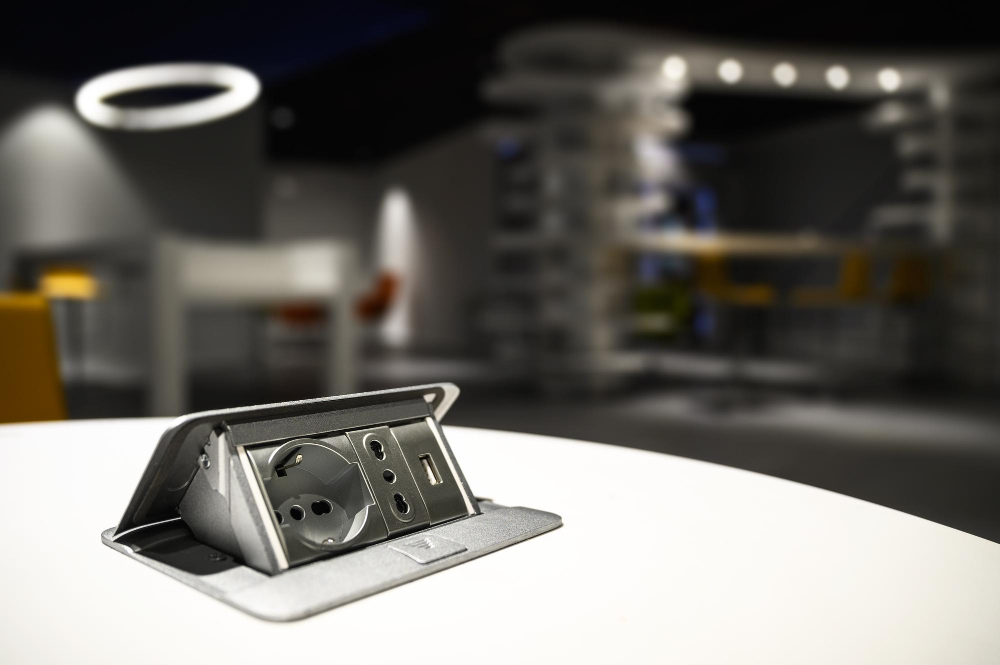
These clever devices are designed to remain hidden when not in use and can be easily raised with the touch of a button. Pop-up outlets can be installed directly into your countertop or island, providing easy access to power without detracting from the overall look of your kitchen.
One popular option is the Lew Electric PUFP-CT-SS Countertop Box, which features two electrical outlets and two USB ports that pop up when needed and retract back down flush with the surface when not in use. This sleek stainless steel unit blends seamlessly into any modern kitchen design.
Another great choice is Mockett’s PCS36A/USB Power Grommet, which offers three power outlets and two USB ports that rise up from beneath your countertop at an angle for easy access while cooking or entertaining guests.
Conceal Outlets With Furniture
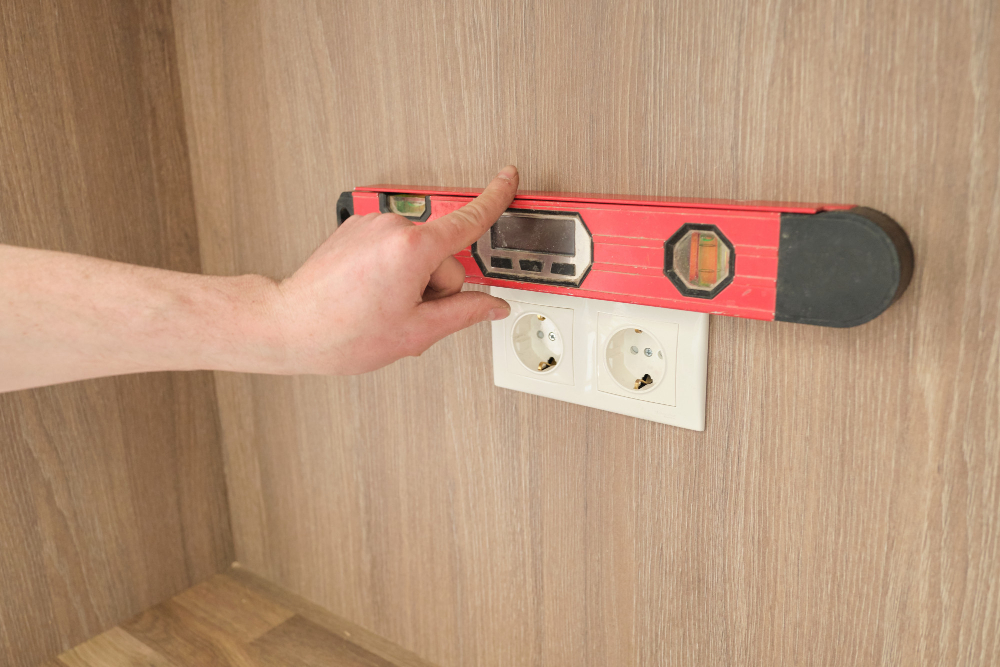
This solution works particularly well if you have a freestanding island or a hutch that sits against the wall. You can install outlets directly into the back of these pieces, so they’re hidden from view but still easily accessible when you need them.
For example, if you have an antique hutch with glass doors and shelves inside, consider installing an outlet strip on the back panel of the piece. That way, you can plug in appliances like mixers or blenders without having cords cluttering up your countertop space.
Similarly, if you have a large kitchen island with seating around it, consider adding power strips along one side of it for easy access to charging ports and electrical outlets while sitting at the barstools.
By integrating electrical features into your furniture pieces strategically placed throughout your kitchen area will not only help keep unsightly cords out of sight but also add functionality to otherwise unused spaces!
FAQ
How do you hide unsightly wall plugs?
To hide unsightly wall plugs, place a power strip into the socket, run it to the back of a drawer unit, and position the unit in front of the socket.
Where should outlets be placed in kitchen backsplash?
Outlets should be placed no farther than 48 inches apart on any kitchen backsplash wall with a base cabinet run of 12 inches or more, complying with electrical code requirements.
What are the most discreet outlet designs for maintaining a seamless kitchen aesthetic?
The most discreet outlet designs for maintaining a seamless kitchen aesthetic are pop-up outlets, under-cabinet lighting, and built-in wall sockets that blend in with the backsplash.
How can you effectively incorporate outlet covers to blend with the kitchen backsplash?
To effectively incorporate outlet covers that blend with the kitchen backsplash, choose covers in colors, materials, or patterns that complement your backsplash design.
Are there any innovative kitchen appliances or installations that can minimize exposed outlets and cords?
Yes, innovative kitchen appliances like retractable outlet systems, wireless charging pads, and under-cabinet lighting help minimize exposed outlets and cords.




